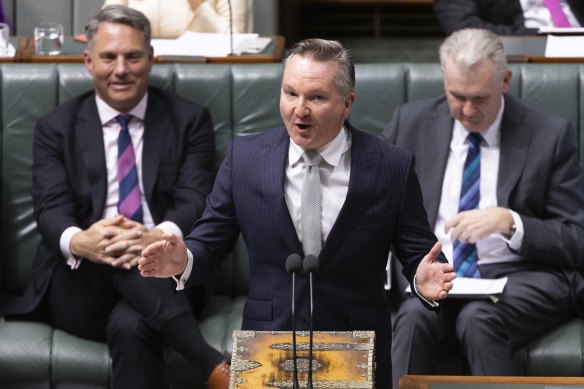The accounting trick at the heart of the world’s climate goals
Earlier this year, I was swimming laps to raise money for charity and I set myself a goal of a certain distance over the month.
It was a real push in the final week when I had to make up for lost time by going to the pool every day and grinding out 1500 metres a pop. That’s a distance Ian Thorpe famously covered in about 15 minutes but takes me an hour in flippers.

Ian Thorpe in the pool for the 2004 Athens Olympics.Credit: Fairfax Media
At the same time I saw some curious discussions in the online forum. As some people realised they wouldn’t make their goal, those who swam extra laps were volunteering to give them away for others to claim.
Now, it does not truly matter how many laps participants swim – the event was about getting physically active and fundraising for charity.
But it got me pondering the philosophical question: if you swim 10 kilometres and someone else swims five kilometres on your behalf, did you really swim 15 kilometres? What about if you swim 10 kilometres and pay to release some fish in a river? Can you then count 100 kilometres?
Net carbon accounting follows the same principle. This is the concept that companies, industries, states and countries need to drive down their net emissions, which can be achieved through both direct cuts to emissions and various carbon credit mechanisms. If one company can’t achieve its emissions reductions in-house, it can buy a credit from another company that made extra emissions cuts, or from a scheme that invests in carbon sinks such as tree planting.
At best, this is a way for all the actors in the economy to work together on the shared goal of decarbonisation. It ensures that those with the capacity to make deeper cuts have an incentive to do so, and it funds valuable projects. At worst, the system can be open to rorting, with the market flooded with junk credits.
Yet, even when the carbon credits are what the boffins call “high-integrity”, there is a risk that they distract us from the main game of making the big systemic shifts needed to drive down direct emissions. The other risk is that a heavy reliance on carbon credits can also make middling efforts look better, which is a form of greenwashing.
At the heart of net-zero accounting is the idea that there are activities that add greenhouse gases to the atmosphere, or sources, and other things that remove it, or sinks, and the two work in tandem like a set of balance scales. This is how the Earth has kept the climate remarkably stable, with only minor fluctuations, for all of human civilisation.
Presumably everyone knows that the goal of net-zero by 2050 is a net goal, since the clue is in the name. This is appropriate because it would be extremely difficult to get to zero and still do what we need to do to sustain human life and society without offsets to mop up the residual, impossible-to-abate, but necessary emissions.
On paper we can offset our way to net-zero. In the real world, we cannot.
With appropriate technology, it might even be possible to move into net negative territory and reverse some of the damage we have done.
It is less appropriate to use net carbon accounting for our near-term goals. Yet, our legislated federal target to cut by 43 per cent on 2005 levels by 2030, and similar state-based targets, are all net goals.
This is not a criticism of the Albanese government, as the issue is broader than that. The United Nations Paris Agreement requires countries to set and meet, yes, net targets.
Yet, at this point in the decarbonisation journey, we should be focusing on making direct cuts as deeply and quickly as possible.

Climate Change and Energy Minister Chris Bowen expects the safeguard mechanism to drive down on-site emissions.Credit: Alex Ellinghausen
The researchers behind the Land Use Report 2023 reviewed the climate pledges for all UN member countries, and found that governments have collectively proposed about 1 billion hectares of land for land-based carbon removal as part of their climate mitigation pledges. That is more than the combined areas of South Africa, India, Turkey and the European Union.
On paper, we can offset our way to net-zero. In the real world, we cannot.
Driving direct cuts
Policymakers are alive to this issue. The safeguard mechanism – the Albanese government’s signature policy to force big polluters to reduce emissions – requires big emitters to keep below baselines but allows them to get there by buying Australian carbon credit units (ACCUs) from authorised carbon abatement programs or safeguard mechanism units (SMUs) from other companies that exceed their requirements.
About one in five facilities that come under the safeguard mechanism met their obligations by surrendering ACCUs in 2022-23.
But Climate Change Minister Chris Bowen told parliament the safeguard mechanism was expected to deliver 260 million tonnes of on-site reductions by 2035. Get that? He’s referring to on-site emissions, also known as in-house or direct emissions, that is before any carbon credits are deducted. That’s good.
There are other policies to drive absolute emissions reductions, such as the new vehicle efficiency standard, and the creation of the Illawarra offshore wind zone. There are also companies doing good work in this space, such as Telstra’s announcement last week it would go harder on direct emissions.
Every decision involves trade-offs, and net carbon accounting has benefits, but we collectively need a greater focus on direct cuts.
We need a cultural shift within businesses to talk about direct cuts first and foremost. We need citizens to be able to see and easily understand a company’s gross as well as net emissions.
Could we set binding targets that say net goals must also include a certain percentage of direct cuts?
Could state governments rewrite planning laws so they can refuse projects with an unacceptable emissions output, rather than allowing them to offset under the excuse of the emissions being too difficult to abate?
Why we need the 2030 goal
Of course, a net target is far better than none at all, and Opposition Leader Peter Dutton’s suggestion last week to walk away from the 2030 goal but keep the 2050 goal is not credible policy.
First, it’s human nature to work for a deadline and interim targets keep us on track. Second, it would put Australia outside the Paris Agreement, and leave us isolated.
But the most important point is that net-zero is not the destination, it is just a mechanism to try to prevent runaway global warming. From a scientific perspective, what is important is the amount of carbon dioxide and other greenhouse gases in the atmosphere.
For millennia, based on ice core data, the amount of carbon dioxide in the atmosphere was 300 parts per million. Most scientific experts agree that the safe level is 350 parts per million, a level we breached in the 1980s. According to NASA, in April we reached 420 parts per million.
Even if it were possible to carry on with business-as-usual until the late 2040s and then wave a magic wand to suddenly ratchet down emissions and achieve net-zero by 2050, this would not actually help. What we add between now and 2050 matters. It’s just physics.
Ross Gittins is on leave.
The Business Briefing newsletter delivers major stories, exclusive coverage and expert opinion. Sign up to get it every weekday morning.